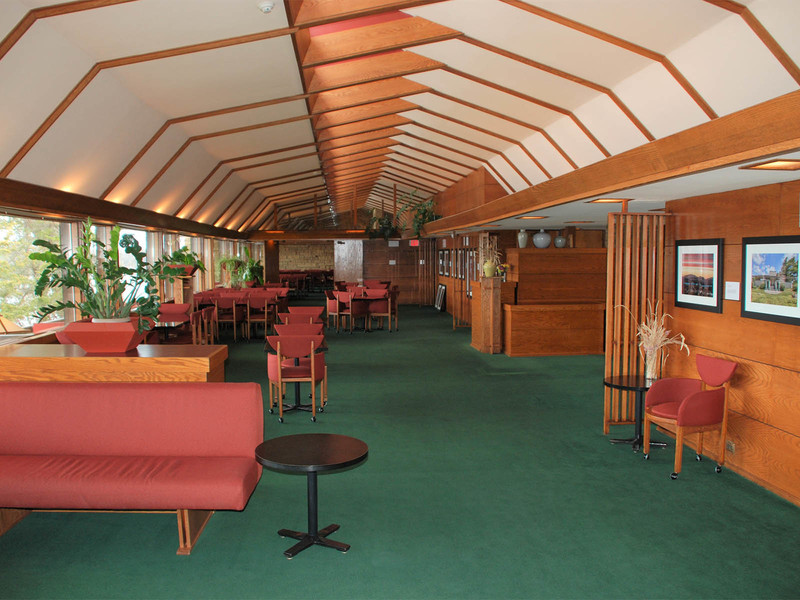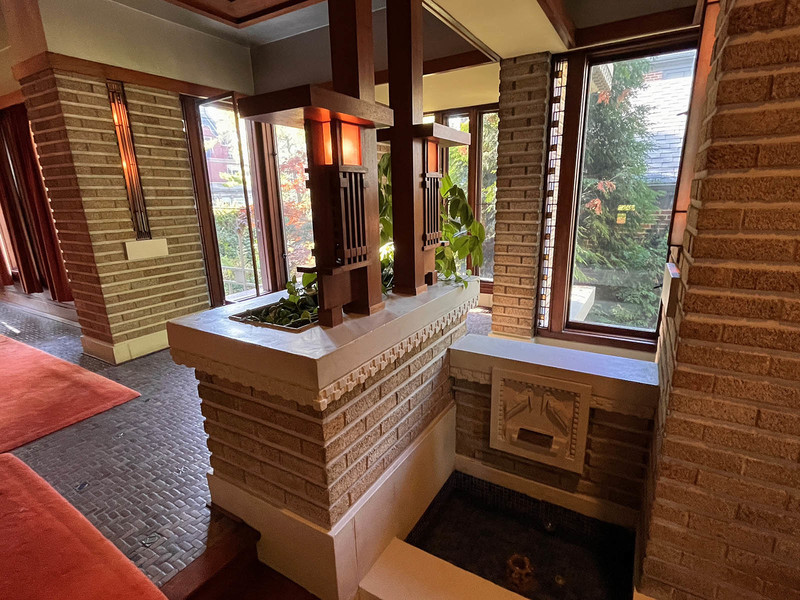In 2015, a seemingly run of the mill Shorewood house hit the news when it was rediscovered as a Frank Lloyd Wright American System-Built design after a long run during which the attribution appeared to have been forgotten.
In fact, the house at 2106 E. Newton Ave. had for many decades been known to be a Wright design, and once it was brought back into the light, folks came from far and wide to see it.
Then Nick and Angela Hayes purchased the home built for Elizabeth Murphy in 1917 and not only set about, ahem, righting the wrongs that had occurred to the house, physically speaking, Nick Hayes began researching the history of the home and the System-Built project, including tracing the relationship between Wright and his then-employee Russell Barr Williamson as well as with the owner, Murphy, and the developer, Arthur Richards.
At the same time, he chronicled the work they were undertaking to restore the house.
The result is "Frank Lloyd Wright's Forgotten House," a book that is part history, part home restoration, part architecture, part memoir and a work much more monumental than its slim size might suggest. Such a readable, personal and deep-diving work about a local Wright house hasn’t been written in years, if ever.
We talked to Hayes about the house and the book, out now in hardcover from the University of Wisconsin Press.
OnMilwaukee: Did you ever think you'd own a Frank Lloyd Wright house?
Nick Hayes: It never crossed our minds. Angela and I were on a quest to downsize and this home is tiny, so we decided to take a look. A few minutes into our tour, we knew we had to live here and a week later we had an accepted offer. We were in a fog of disbelief for the first few years.
What are some of the joys that come with it? Especially with this one specifically?
It is almost all joy. We’re especially grateful for Wright’s modest but open floor-plan; which provides privacy and comfort yet insists on social interaction at the same time. And we love the ample sunlight, which makes every day different.
What have been some of the challenges?
At first we thought it might be difficult to fit into the space. We sold or gave away one half of our possessions to do it. Quickly, however, we learned the benefits of downsizing. As I explain in the book, Wright taught us to "spend less, store less, maintain less, waste less, and consume less,” and that has paid dividends in the form of hours recaptured for other things.
Did you know from the start that you'd chronicle the restoration and the history, or did you have to recreate the journey from memory?
By luck and circumstance, many of Wright’s ideas for Elizabeth Murphy’s house -–an American System-Built Home, Model A203, have survived the last 103 years, so we are obligated to protect them. We don't change anything without going back to the original intent. We study his drawings and plans, we ask other ASBH owners and Wright experts, and then we balance modern codes, safety and convenience with historic-appropriateness.
This has helped us to build new habits; we write project plans, take before and after photographs, and create and share lists of lessons-learned. Preservation has become a labor of love. It’s gratifying that thousands of visitors from around the world read our blog and visit our gallery.
The book is a nice dive into FLW and Russell Barr Williamson and American System Built houses, but still very readable. Were you cognizant of writing for a non-specialist reader?
The American System-Built program was Wright’s first full-fledged attempt at democratizing art in architecture. He wanted to make beauty affordable and put it in reach of everyone because he believed it would improve lives. And while this program mis-fired, his commitment to that cause did not waver. Since Wright was designing for everyone, I felt a responsibility to write this story for everyone.
I was especially intrigued by the relationship between Wright and Williamson, who went on to design many, many homes in Milwaukee, tell us a bit about what Williamson took along with him, in terms of ideas, when he went his own way.
The four-year relationship between Wright and Williamson has been mysterious – fodder for gossip and conjecture – since neither man would acknowledge the other after 1917. As you know, the book explores the circumstance around their tumultuous break-up.
A key point: Williamson was a gregarious young man just graduated and marrying and Wright was propping up a fragile practice while working in Japan and also trying to democratize architecture. They had different goals/needs at the time and so they went very different directions after separation.
Does he credit the credit he deserves for the work he put into Wright projects? Does he deserve credit?
There were three main actors in the American System Built-Homes program: Frank Lloyd Wright, Arthur Richards (his development partner) and Russell Williamson (the Barr would come later).
Williamson appears to have been tasked with organization, project management, drafting and, importantly, “systematizing" much of the “System.” However, evidence in his subsequent work(s) suggests that he didn’t appreciate, and therefore, he didn’t adopt many of the key organic ingredients that Wright demanded, especially in the context of affordable housing.
And again, since Williamson would not acknowledge having worked on American System-Built Homes when asked later in life, his specific contributions are up for debate.
What do you hope readers will take away?
This is a story of competing ambitions leading to mistakes and cover ups. But it is also the story of discovery: about learning what’s important in day-to-day living – like making space and time for family, friends and new relationships – things that Wright hoped to help everyone do more of.
From following on social media, it looks like you're always at it, working on the house. Will your work ever be complete?
We hope not.
Read more about Wright and Williamson
in this Urban Spelunking article.
Born in Brooklyn, N.Y., where he lived until he was 17, Bobby received his BA-Mass Communications from UWM in 1989 and has lived in Walker's Point, Bay View, Enderis Park, South Milwaukee and on the East Side.
He has published three non-fiction books in Italy – including one about an event in Milwaukee history, which was published in the U.S. in autumn 2010. Four more books, all about Milwaukee, have been published by The History Press.
With his most recent band, The Yell Leaders, Bobby released four LPs and had a songs featured in episodes of TV's "Party of Five" and "Dawson's Creek," and films in Japan, South America and the U.S. The Yell Leaders were named the best unsigned band in their region by VH-1 as part of its Rock Across America 1998 Tour. Most recently, the band contributed tracks to a UK vinyl/CD tribute to the Redskins and collaborated on a track with Italian novelist Enrico Remmert.
He's produced three installments of the "OMCD" series of local music compilations for OnMilwaukee.com and in 2007 produced a CD of Italian music and poetry.
In 2005, he was awarded the City of Asti's (Italy) Journalism Prize for his work focusing on that area. He has also won awards from the Milwaukee Press Club.
He has be heard on 88Nine Radio Milwaukee talking about his "Urban Spelunking" series of stories, in that station's most popular podcast.







